List of Gemstones with Names, Pictures, and Colors
The list of gemstones below will discuss the difference between a precious stone and a semi precious stone as well as guide you to where the gemstone treatments are discussed. While going through history, gemstones have played a vital role in rituals and myths also. Different stones have their unique color and meaning. They have their power, birthplace, and importance in one’s life. Several gemstones have been discovered in history, while some have been recently introduced to the world by archaeologists. How was emerald called emerald? Why is an amethyst? Who invented the name Kunzite? Some come from Latin, others from Greek, still others from Sanskrit and some have been lost in the mists of time. Others are named after the person who discovered them or the man who paid for the trip or even the place where they were found. Find out what is the origin of the name of your favorite gemstone.
Where does the name agate come from?
Agate was named after the Greek philosopher and naturalist Theophrastus, who discovered the gemstone in the Achates River between the 4th and 3rd centuries BC. The Achates River is located in Sicily, Italy, although it is now called the Dirillo, and Theophrastus may have passed through this region on his journey with Aristotle.Where does the name alexandrite come from?
Alexandrite was discovered in the 1830s by Finnish mineralogist Nils Gustaf Nordenskiöld in the Urals roller coaster and was thus named in honor of the future Tsar Alexander II of Russia, particularly for the way alexandrite sported the two military colors of Imperial Russia - red and green.Where does the name of amazonite come from?
Amazonite, a green feldspar, is a combination of the name of the Brazilian river, the Amazon, and the suffix -ite, used to form names for rocks or minerals. Beyond this explanation, the etymology of amazonite is quite vague as it is doubtful that green feldspar is found in the Amazon region, although other green stones have been mined from it. Additionally, although archaeologists confirm that amazonite was used for ornamental purposes in Egypt and Mesopotamia, no medieval authority refers to amazonite and it was only described as a distinct mineral in Eighteenth-century.Where does the name amber come from?
The etymology of amber can be traced back to the Arabic Anbar, which refers to ambergris, the solid, waxy substance found in the sperm whale that has been used for centuries to make perfumes. The Romans extended the meaning of this word to refer to Baltic amber resin, or yellow resin (yellow amber). When the word became common in Middle English, a distinction was made between gray amber and yellow amber. Eventually, as the use of ambergris declined, the word amber came to be used only to refer to the yellow fossil resin, known today as amber. The ancient Greeks called amber electron, a word that meant made by the sun. In one myth, Phaëton, son of Helios (the Sun) is killed and his sisters, transformed into poplar trees, weep tears of mourning amber.Where does the name amblygonite come from?
Amblygonite was first discovered in Saxony by August Breithaupt, a German mineralogist, in 1817. Breithaupt formed the name from the Greek ambles, which means blunt, and gonia, which means angle, is due to the obtuse angle between the cleavages of the amblygonite. Breithaupt also replaced Friedrich Mohs, inventor of the Mohs scale of hardness, as professor of mineralogy at the Mining Academy of Freiberg.Where does the name amethyst come from?
Amethyst takes its name from the Greek word amethystos, formed by the parts a-, which means not, and methys, which means drunk or intoxicated. The Greeks named this gemstone because of the centuries-old belief that wearing it would protect against drunkenness or act as an antidote to intoxication, possibly due to the color of amethyst which resembles that of wine. . This is why amethyst, the gemstone of non-drunkenness, has been associated with saving the wearer from drunkenness, a common problem among the ancient Greeks, who carved amethyst number of their chalices and wine-cups. One of the myths surrounding amethyst relates to the Greek god of viticulture, Dionysus (also known as Bacchus in Roman mythology), who had been insulted by a mortal. In his rage, he swore to kill the next mortal who crossed his path with a pack of wild tigers of his creation. Tragically, that mortal was Amethystos, a beautiful maiden on her way to pay homage to Artemis, goddess of the hunt, nature, wild animals, the moon, and chastity. Artemis then took pity on Amethystos, her faithful devotee, and transformed her into a statue of pure crystalline quartz to protect her from the ripping claws of the tigers of Dionysus. After contemplating the statue for himself, and regretting his deeds, Dionysus wept tears of wine, staining the quartz, thus giving the The French poet Rémy Belleau tells a relatively more modern and light-hearted version of the tale in which the young girl, this time called Amethyst, attracts the attention of Bacchus, who falls in love with the young girl. She refuses his advances, wishing to remain chaste, and begs Diana (the Roman equivalent of Artemis) to protect her, which she does by transforming Amethyst into a statue of pure white stone. When Bacchus sees the statue, he is so moved by it that he makes an offering of wine, which he pours over the statue, tinting it purple and thus giving the amethyst its purple color. Legends around the name of the amethyst stone continue today as Anglican bishops wear amethyst rings in reference to Act 2:15, in which the apostles of Pentecost were described as not drunk.Where does the name ametrine come from?
The name of this gemstone is a mixture of the names amethyst and citrine, for the way it contains areas of purple and yellow or orange. Ametrine is also known as bolivianite because the most economically important source of this gemstone is the Anahi mine in Bolivia.Where does the name ammolite come from?
Ammolite is so named for its origin - the fossilized shells of ammonites, disc-shaped cephalopods dating from the Upper Cretaceous.Where does the name andalusite come from?
This mineral was given the name andalusite by Delamétherie, a French mineralogist, geologist, and paleontologist who mistakenly thought it came from Andalusia, an autonomous community in southern Spain. Although it was soon discovered that the specimen studied came from the province of Guadalajara, near Madrid - and not from Andalusia - the name was not changed and still persists today.Where does the name andesine come from?
Andesine received its name for its occurrence in the Andes Mountains, specifically in the Andesian lava flows found in these mountains. Although this gemstone may have other sources (the Congo, Tibet, southern India) that were discovered before the 1841 description of the Marmato mine in Colombia, andesine is the officially recognized name. It is also sometimes referred to as andesine-labradorite, although the two names should not be used synonymously because andesine-labradorite refers to a mineral whose chemical composition lies between andesine and labradorite.Where does the name apatite come from?
This mineral, named by the German geologist Abraham Gottlob Werner in 1786, is often confused with other minerals and has therefore been called apatite, from the ancient Greek apatao, which means to deceive or to be deceitful.Where does the name aquamarine come from?
This bluish-green variety of beryl takes its name from the Latin aqua marina, which means seawater, for its resemblance to the crystalline bluish-green of shallow marine waters.Where does the name of the aventurine come from?
This mineral received its name for its resemblance to Italian aventurine glass, also called goldstone. In Italian, ventura means by chance and refers to the accidental discovery of this type of glass. Most historians agree that this glass was first created in the Murano region near Venice, Italy, although there are varying stories of who made it first and when. A recurring theme in these mythologies is that the aventurino was created when someone accidentally dropped copper filings into molten glass. The name was then assigned to the mineral which shares a similar appearance.Where does the name axinite come from?
This group of minerals takes its name from the ancient Greek axine, which means axe, referring to the tendency of axinite crystals to be large, sharp, and axe-shaped.Where does the name azurite come from?
This deep blue gemstone takes its name from the ancient Persian word lajevard, which refers to the gemstone lapis lazuli, another deep blue gemstone, as well as an area where it was mined. . The pronunciation has become lazevard in Arabic. Lapis lazuli is so called for the Latin lapis (stone) and lazulum (deep blue). Passing from Medieval Latin to Middle English (asure) and Middle French (azure), the lazuli lost the l, as if it were a French article, to finally become the word associated today with a clear blue sky: in English, azure; in Italian, azzurro; in French, azure; and in Spanish, azul. That is why, in 1824, the French geologist François Sulpice Beudant changed the name from lazhward to azurite.Where does the name beryl come from?
The name of this gemstone family, which includes aquamarine and emerald, dates back to Prakrit, a Middle Indo-Aryan language used between 600 BC and 1000 AD. of the prakrit used the term verulia (or veluriya) to designate this gemstone. The ancient Greeks called this stone beryllos, which means gemstone of blue-green color of water. Although the chronology of the use of these terms in Greek and Prakrit is unclear, the similarity between the two words is unlikely to be coincidental. Furthermore, as there are many significant deposits of beryl in and around India, and none in Greece, From Ancient Greek, the name was adopted into Latin (beryllus), then into Old French (beryl) and Middle English (beril). It seems that the adaptation to Old French remained the same (probably due to the use of Latin for scientific classification) and the spelling beryl is what we use today.Where does the name Bloodstone come from?
This gemstone is so named because of its red hematite inclusions that look like drops of blood. But bloodstone has another name, heliotrope, which has its own etymology. This name is derived from two ancient Greek words: helios (sun) and trepo (tower). It is said that the Greeks named this gemstone so because of an optical phenomenon: when bloodstone is placed in water in direct sunlight, the whole stone appears red.Where does the name calcite come from?
The name of this carbonate mineral made its way into English via a German name, Calcit, which is derived from the Latin for lime, calx with the suffix -ite to indicate that it is a mineral. Calcite was not invented until the 19th century; before that, the mineral was known as alabaster, a name whose etymological roots go back to ancient Egypt. As this mineral was most often used to create containers for perfumes and ointments, the Egyptians called it a-labaste, in reference to Bast, the cat-headed goddess known as She of the ointment jar. The Greeks started using this mineral for the same purpose as they expanded through Egypt and adopted this name into their language, calling it alabastos. From there, the name passed to Latin (alabaster), then to Old French (alabaster), and finally to Middle English (alabaster), the spelling we use today.Where does the name carnelian come from?
This translucent, brownish-red to orange variety of chalcedony owes its name to its resemblance to the dogwood. However, the etymology does not stop there; to fully understand the origin of this name, we must go back to Latin. The Cornish fruit was known in Latin as cornum, a word derived from the root caro, or carnis, which means flesh. It is reasonable to think that the fruit resembled animal or human flesh and therefore received this name. In medieval Latin, the term corneolous was used to refer to this gemstone; it is claimed that this word became cornelian, as it was used in English in the 14th century, only to be changed to carnelian in the 16th century.Where does the name cassiterite come from?
The etymological origin of this tin oxide mineral is linked to Old World sources for tin. Although the Greeks used the word kassiteros (tin) to refer to this mineral, it is quite clear that the element's ancient name originated from Phoenician expeditions to the north, specifically to Ireland and Britain. It is well known that these two places were the main sources of tin for ancient people. This is why the Phoenicians called this region Cassiteride. More recently, it has been argued that the name originated from the Kassites region, where an ancient people of western and central Iran lived, an area also known for its tin oxide deposits.Where does the name chalcedony come from?
A cryptocrystalline form of silica, this gemstone received its name from Chalcedon, an ancient sea-city almost directly across from Byzantium in Asia Minor. It is unclear why the Greeks named this city so, or why they later attributed this name to Chalcedony. As there do not seem to be many localities for the stone in this region, it is possible that the blue of the chalcedony was somehow reminiscent of the color of the seawater around Chalcedon, which prompted the Greeks to share the name with the gemstone.Where does the name charoite come from?
A very rare mineral silicate, Charoite received its name from the Chara River in Siberia, Russia, the only known source for this gemstone. The word is made up of Ча́ра (chara), a Proto-Slavic word meaning glass, bowl, cup or goblet, -o, and -ite, indicating that it is a mineral. It is possible that the swirling patterns of white on this purple stone are suggestive of the rapids found along the Chara River.Where does the name chrysoberyl come from?
Not to be confused with beryl, a completely different gemstone, this beryllium aluminate is named after the Greek chrysos (gold) and viryllos (beryl). While the Greeks did not distinguish between beryl and chrysoberyl beyond color, modern chemistry has shown us that there was indeed a big difference in their mineral compounds.Where does the name chrysocolla come from?
Name used for the first time by Theophrastus in 315 BC, then taken up by André-Jean-François-Marie Brochant de Villiers in 1808, chrysocolla is composed of the Greek chrysos (gold) and kolla (glue). This name alludes to the resemblance of chrysocolla to the material used as a fluid when soldering gold in antiquity.Where does the name chrysoprase come from?
The name of this variety of chalcedony is an allusion to its apple green color. The Greek words chrysos (gold) and prasinos (green) are combined to mean golden appleWhere does the name citrine come from?
The etymology of citrine is very clearly linked to its resemblance to citrus fruits, in particular lemon, grapefruit and orange. Prior to 1556, when German metallurgist Georg Bauer first named the gemstone in a publication on jewelry and gemstones, citrine was referred to as yellow quartz. In all likelihood, Bauer derived the name from the old French citrine (lemon-colored), which was derived from the Latin lemon tree (the lemon tree).Where does the name clinohumite come from?
Clinohumite and humite have very similar molecular formulas; however, humite has an orthombric crystal system, while clinohumite has a monoclinic crystal system. This is why this unusual member of the humite mineral group was given this name in reference to its crystal system and its similarity to humite.Where does the name coral come from?
First used by Theophrastus to describe the precious red coral (thought to be a mineral), the name korallion was adopted in Latin as corallium, then in Old French as coral around 1300 CE, when it has been used to refer in general to the marine invertebrates we know as coral.Where does the name of danburite come from?
This mineral was first discovered in 1839 by the American mineralogist Charles Upham Shephard, in Danbury, Connecticut, USA, hence its name, a combination of danbur- (its main locality) and -ite, a suffix to indicate that it is a mineral.Where does the name of the diamond come from?
The name of the hardest natural material on earth is derived from the ancient Greek word adamas, which can be translated as invincible, undefeated or clean in reference to the durability of diamonds. This word crossed into Latin as adamas, then Late Latin as diamas, Old French as diamond, and Middle English as dyamaunt. The modern English spelling of the word diamond probably appeared around 1350 CE.Where does the name of the diaspore come from?
This name, coined by René Just Haüy in 1808, is derived from the Greek diaspeírei (to disperse) in allusion to the tendency of this mineral to decrepit (split, fragment and disperse audibly) when exposed to high temperatures.Where does the name diopside come from?
This pyroxene mineral belongs to the class of prismatic crystals - its shape is a prism. Since there are two ways to orient a prism, René Just Haüy (a French priest and mineralogist known as the Father of Modern Crystallography) was inspired to create a name from the Greek dis (double) and opse ( front); the suffix -ide is added to indicate that it is a mineral. There are two varieties of gem-quality diopside: chrome diopside, a green gemstone, so named because of the chromium that gives it its color, and black star diopside, which gets its name from its asterism (or star effect). ).Where does the name emerald come from?
To ancient Egyptians, Arabs, and Hebrews, emerald was called bwyrq (Egyptian sparkling), barq (Arabic flashing), and baraket (Hebrew emerald, flashing gem). The path to our modern use of the name emerald began when it was called marakata by the ancient Indians, a word meaning the green growth of things This word made its way in some form into Persian, which was later translated by the Greeks to become smaragdos, green stone. This term was later adopted in Vulgar Latin as smaralda, then in Old French as emerald, and finally in Old English as emeraude.Where does the name enstatite come from?
A common mineral in meteorites, enstatite received its name for its resistance to high temperatures and its ability to maintain its refractive index under extreme heat. Because of this property, the Greek enstates, which means resistance, was combined with the suffix -ite to designate it as a mineral.Where does the name epidote come from?
This mineral has a characteristic crystal with a longer side at the base of the prism. In allusion to this, René Just Haüy gave it the name of epidote, from the ancient Greek epidosis, a term which means addition or increase.Where does the name fluorite come from?
In 1797, Italian chemist and mineralogist Carlo Antonio Galeani Napione gave fluorite the name we use today in reference to this colorful mineral. However, discussion of fluorite dates back more than 250 years before Napione's designation, when in 1530 Georgius Agricola, a German scientist, examined the use of fluorite as a fluid in iron smelting, although he called it fluorspar, a neo-Latinization of the German Flusspat, Fluß (stream, river) and Spat (a non-metallic mineral related to gypsum). The etymology of Fluorpar goes back to Latin, where fluere meant to flow. In fact, the word flow comes from the Latin adjective fluxus (to flow). In 1810, fluorite gave the halogen its name, fluorine. In 1852, George Gabriel Stokes discovered the ability of fluorite specimens to produce a blue glow when illuminated with light; he then coined the term fluorescence. In the context of archaeology, gemology, classical studies and Egyptology, the Latin terms murrina and myrrhina refer to fluorite.Where does the name garnet come from?
Called carbuncle (a general term for red stones) in antiquity, this group of silicified minerals eventually received their names from Middle English gernet (dark red), and Old French grenate (pomegranate red). It is widely accepted that this word goes back to the Latin granatum, used to describe a pome fruit; in this case, the pomum granatum, or pomegranate, a fruit whose seeds are covered with a bright red. It would have been reasonable for ancient naturalists to observe the resemblance of red, grainy garnets and compare them to pomegranate seeds.Where does the name of gaspéite come from?
This very rare mineral nickel carbonate is only found in a handful of places in the world. It was first discovered in the Gaspé Peninsula in the province of Quebec in Canada; this is why the suffix -ite was added to the name to designate the mineral and pay homage to the place where gaspeite was discovered. It is commonly believed that gaspé comes from the word Gespeg of the Mi'kmaq (a First Nations tribe in northeastern Canada), which means end of the earth. Other theories suggest that the name is a corruption of the Basque geizpe or kerizpe, meaning shelter; or that the peninsula was named after the Portuguese explorer, Gaspar Corte-Real, who explored Newfoundland and Labrador in 1500.
Tags:
- Black gemstones
- Blue gemstones
- Category_Gemstones
- Gemstones and crystals
- Gemstones birthday
- Gemstones by month
- Gemstones crossword clue
- Gemstones for sale
- Gemstones HBO
- Gemstones list
- Gemstones meaning
- Gemstones names
- Gemstones near me
- Green gemstones
- Pink gemstones
- Purple gemstones
- Red gemstones
- Righteous gemstones
- Yellow gemstones
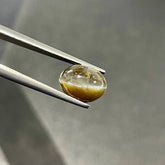
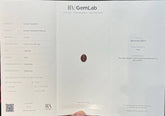
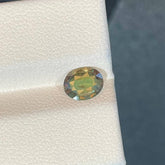
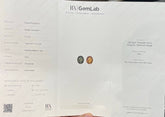
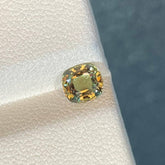
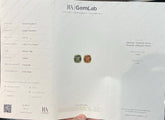
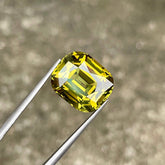
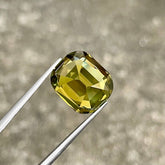
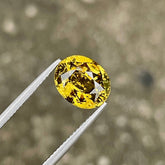
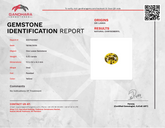
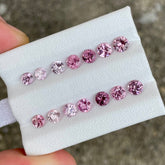

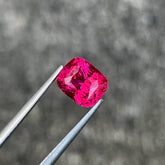



Leave a comment
Please note, comments need to be approved before they are published.